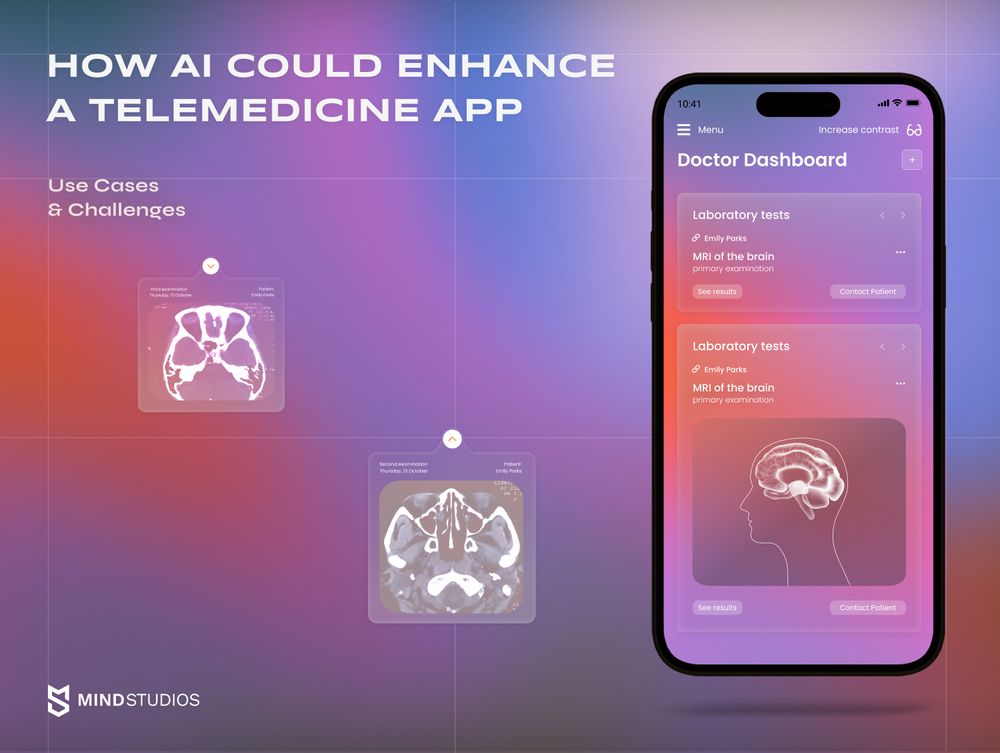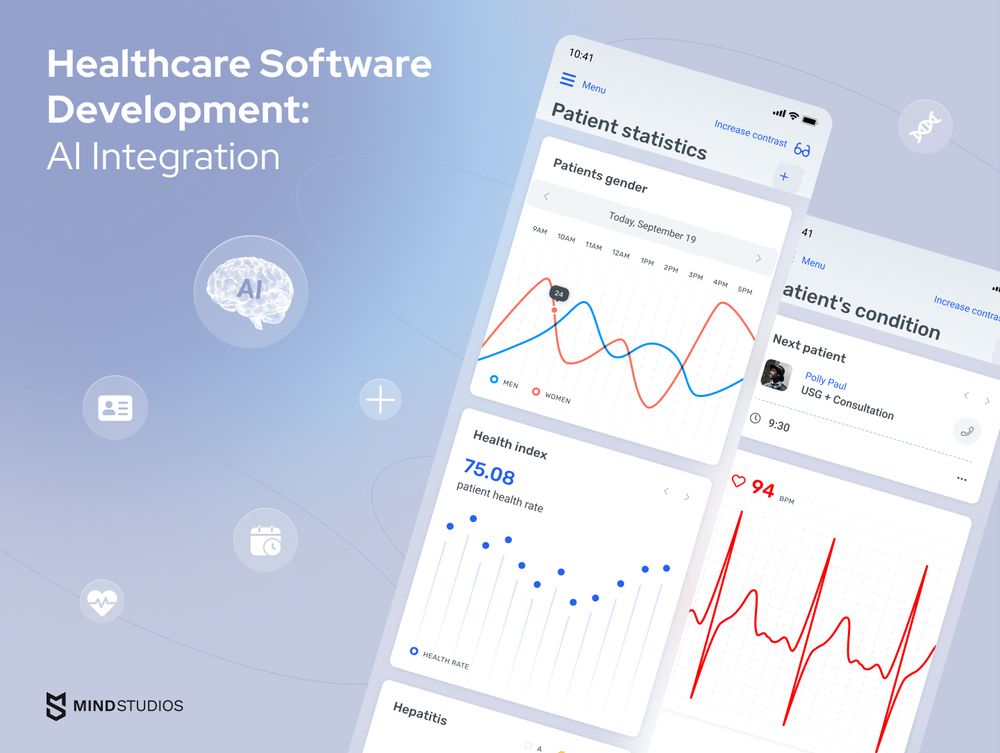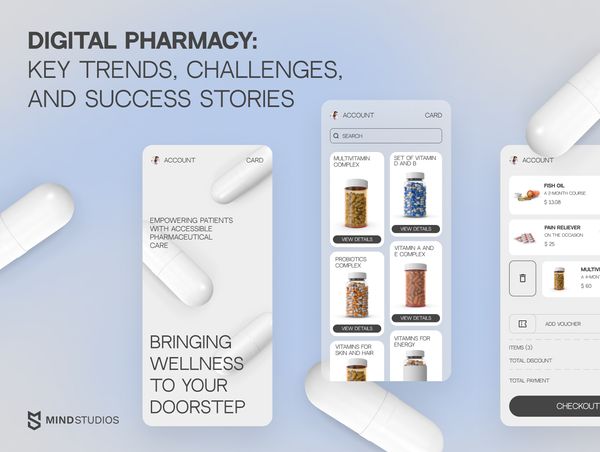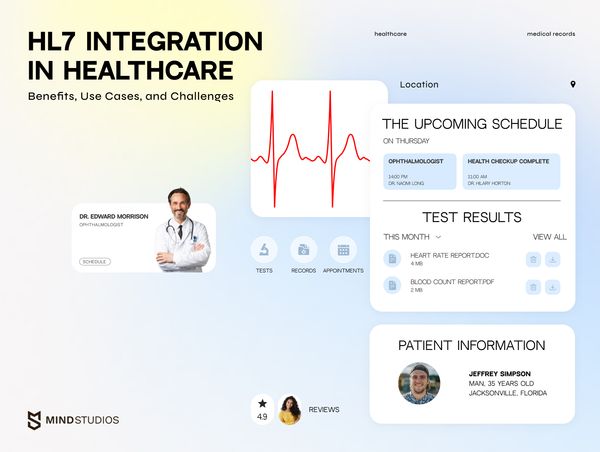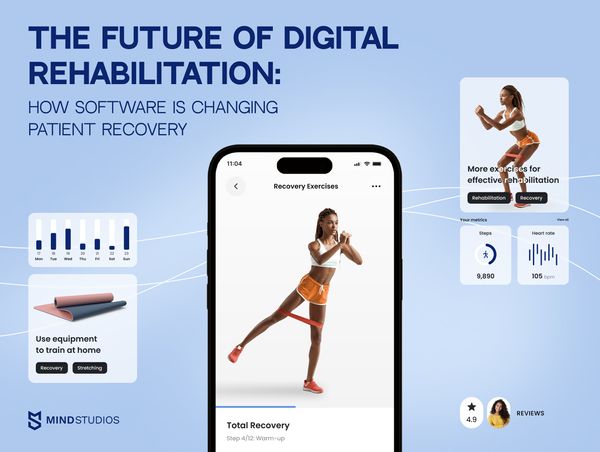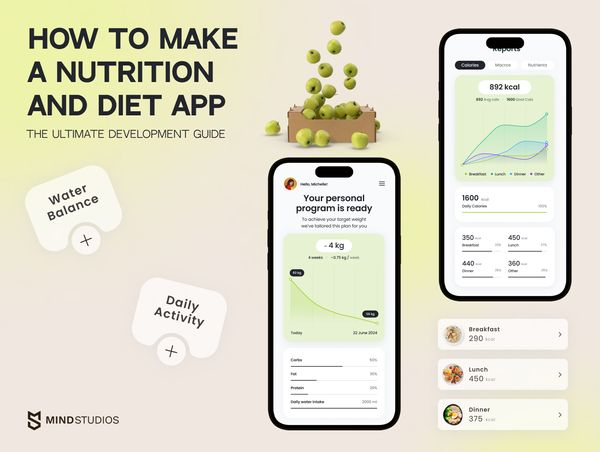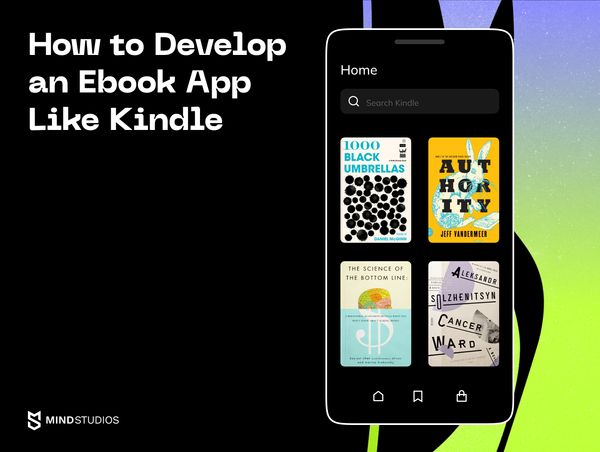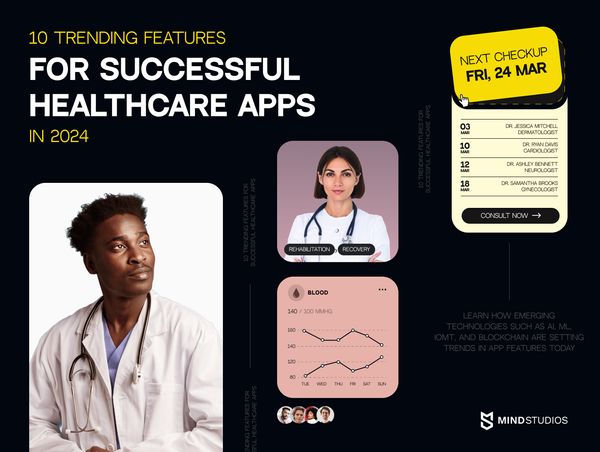
With technological advancements, exploring trending features for healthcare apps becomes essential. They revolutionize the healthcare industry for good, offering more personalized, customer-centric, and secure medical services.
Today, both healthcare providers and individuals alike are looking for better ways to manage their health and medical care. Their growing interest is driven by the need to get more personalized, secure, as well as efficient healthcare solutions.
We at Mind Studios know the must-have functionality for healthcare apps because we have been working in this sphere for a while and have rich experience implementing features that bring value. Recently, we created a healthcare app for caretakers with real-time monitoring and alerts. Its main aim is to help healthcare professionals provide exceptional services so patients and their families feel more at ease. Contact us for a free consultation if you need a similar project.

In this article, we will shed light on the latest trends that are set to stage a more accessible, advanced, and patient-oriented healthcare ecosystem in 2024.
10 trending features for healthcare apps
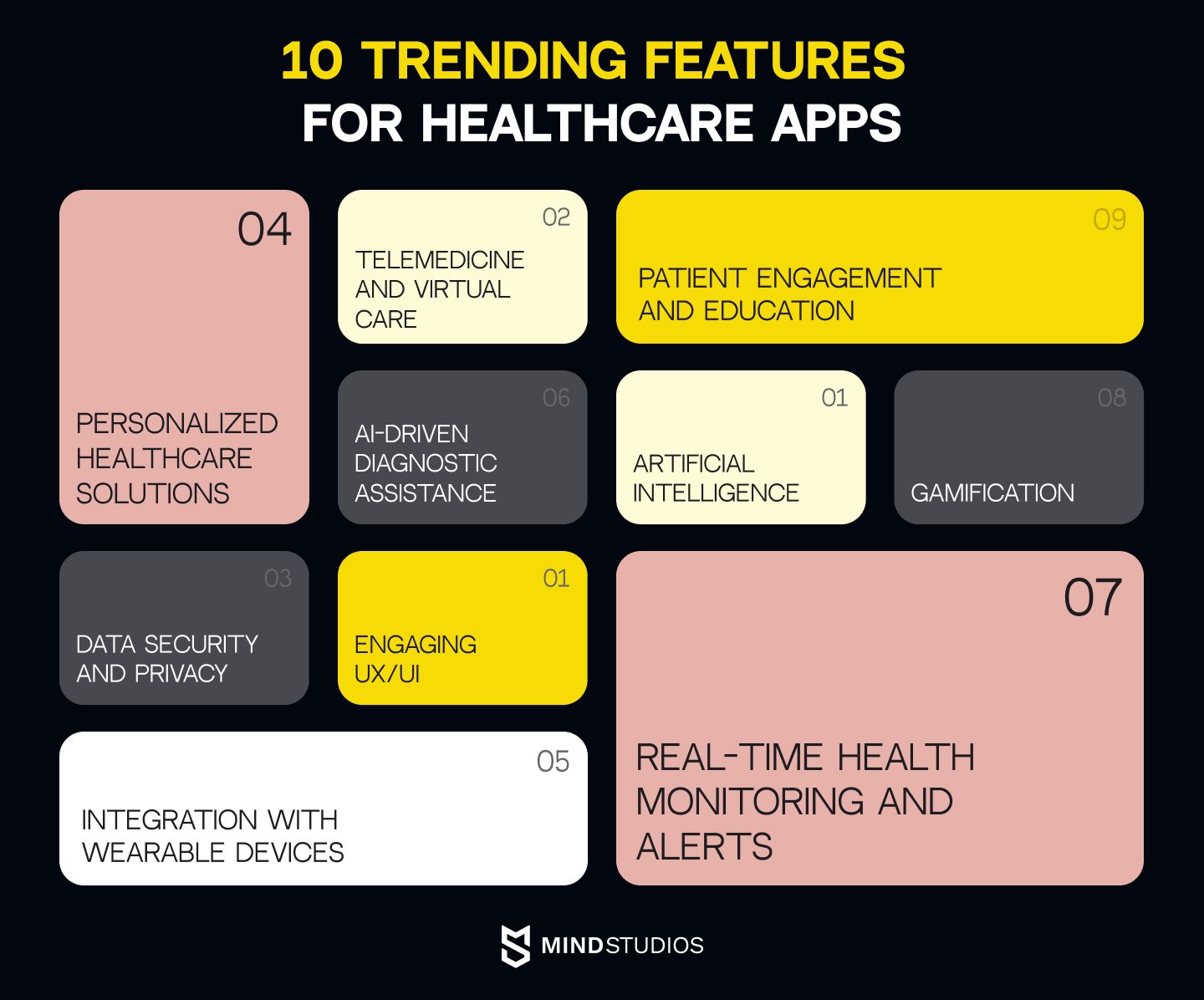
The global mHealth market is expected to increase at a CAGR of 11.6% until 2030, with more than 350,000 apps already available now. So, having a standout strategy is key today.
What features do you need to include in your healthcare app today?
Here is what Kseniia Ovsiienko, UI/UX Designer at Mind Studios, says on this matter:
“The right choice of features must be based on the users’ needs. In the pursuit of implementing modern technologies, you can easily forget the ultimate goal of your app and, thus, make it inconvenient to use. Plus, an app with unnecessary features will take much longer and be more expensive to develop. Moreover, features used by a few will be difficult to update and maintain. I think must-have features for healthcare apps include an intuitive interface and a clear understanding of the app’s capabilities because confused users or those who haven’t figured out how to solve their problems with an app are unlikely to return.”
Based on this insight, we have identified 10 top features that can increase the chances of your app’s success in 2024.
Feature #1: Engaging UX/UI
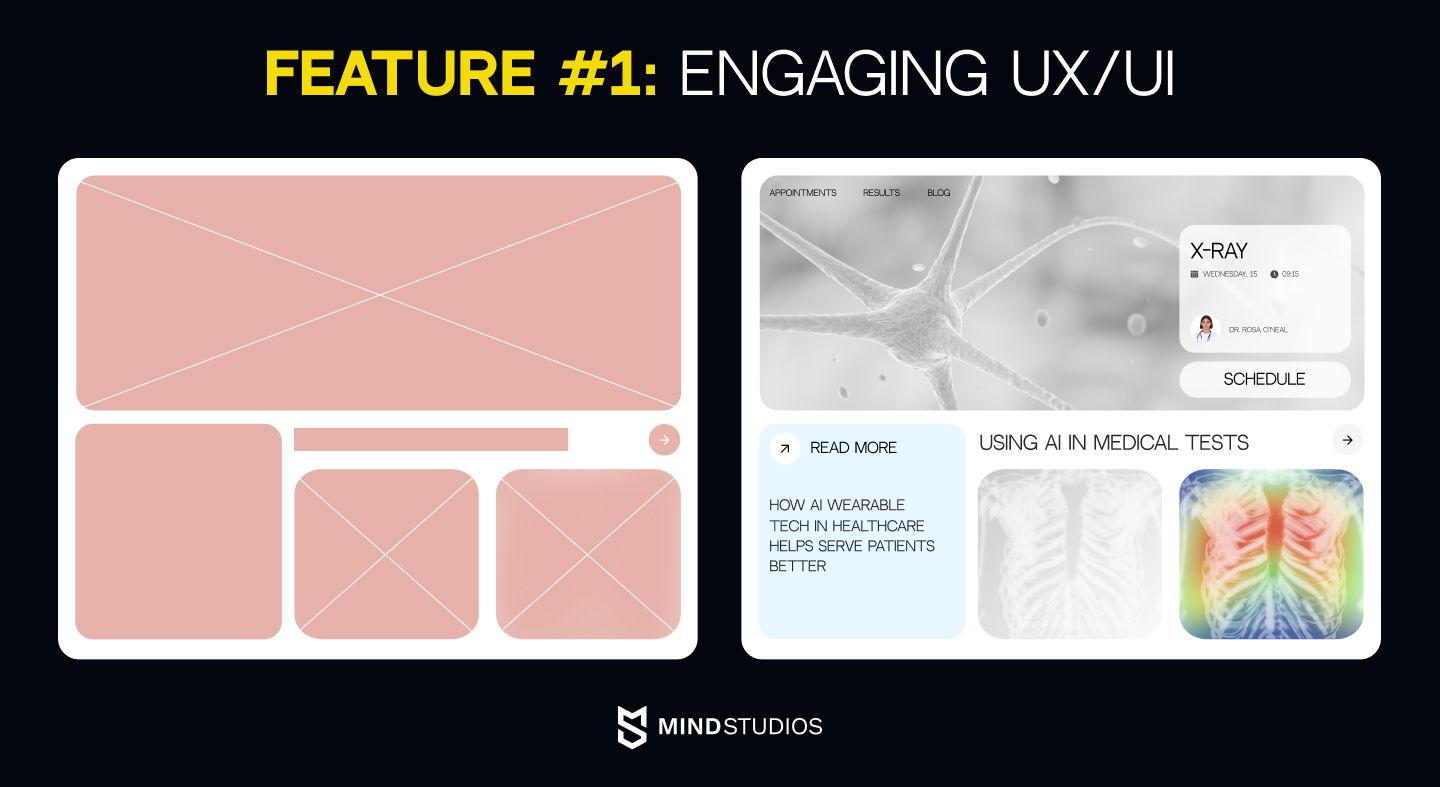
The design of your healthcare app is the first thing that grabs the user's attention. The golden rule here is to make it user-centric. That's why it must be intuitive and engaging. Make sure that the design of your app is relevant to your healthcare business and is not too complex. Also, consider your app's navigation, as it must fit users of all tech levels with intuitive workflows and interfaces.
Feature #2: Telemedicine and virtual care
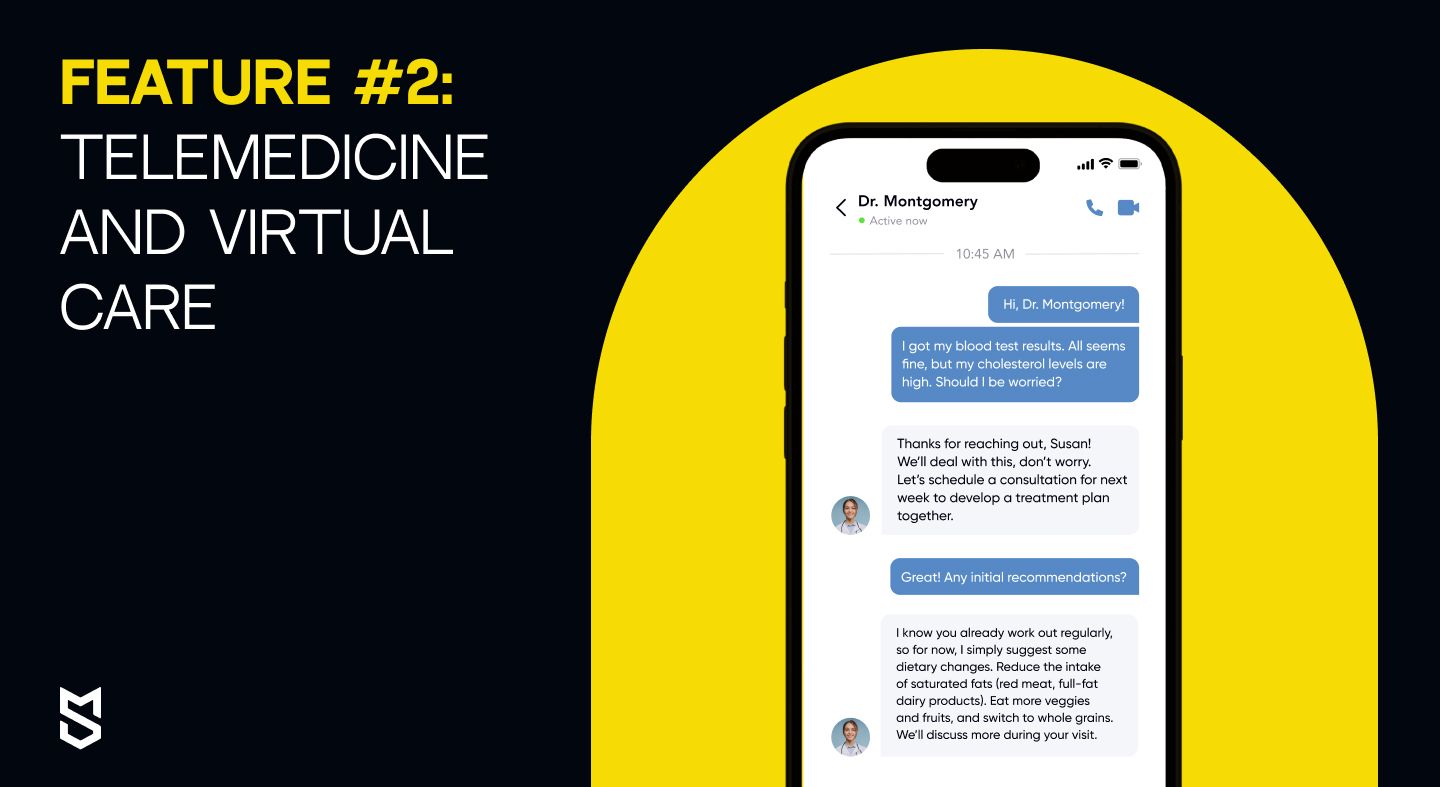
Telemedicine has great potential. It has become extremely popular as it allows the monitoring and treatment of numerous chronic conditions without the need to travel anywhere. In fact, the global telehealth market was valued at $101.2 billion in 2023, and it is expected to grow further, with an annual rate of 24.3% between 2024 and 2030.
With more and more patients aware of telemedicine, many healthcare apps now have an in-app chat with medical workers through text or video. It helps to reach a wider audience as it allows access to remote areas with no medical facilities.
When combined with AI, telemedicine becomes even more powerful. It helps reduce doctors' workload while increasing their job satisfaction. It also allows for a more thorough review of patients' health, together with an inspection of any abnormalities.
Feature #3: Data security and privacy
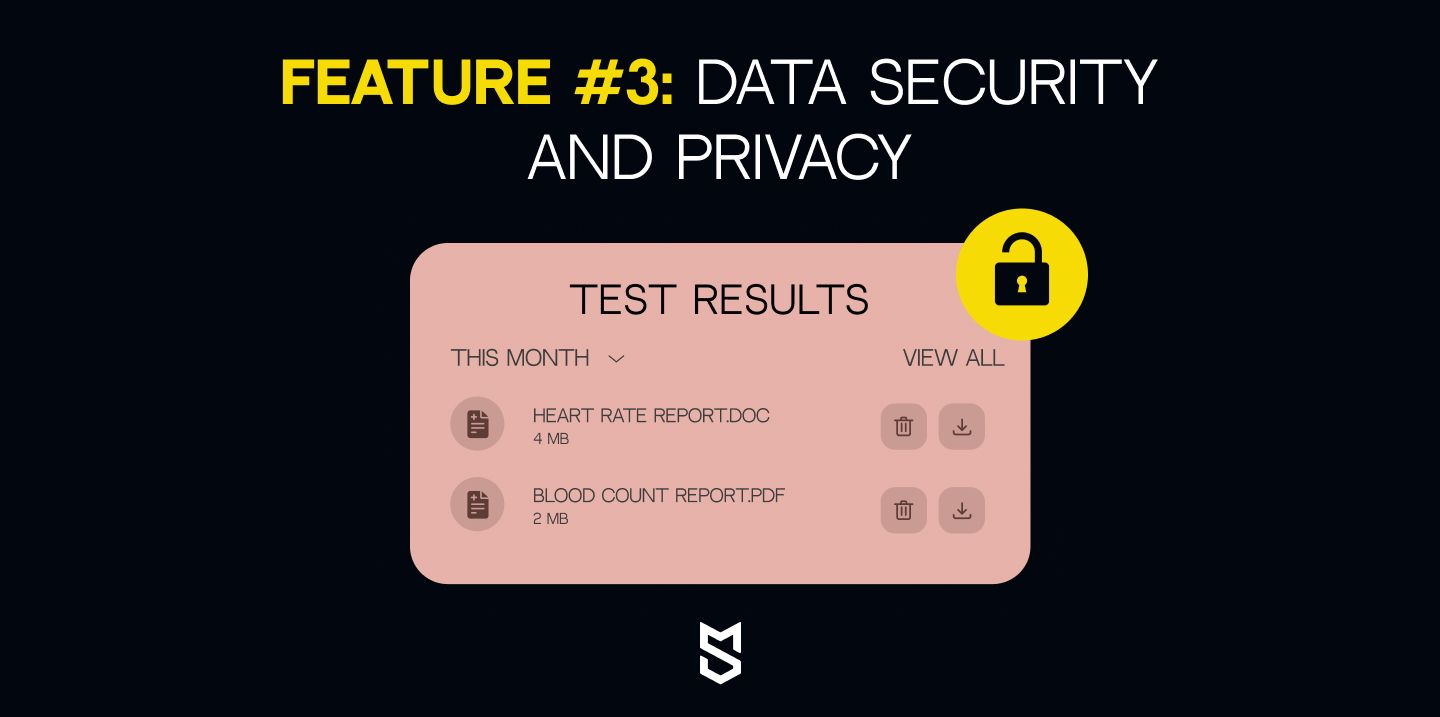
Health data is highly sensitive. That’s why opting for strong and reliable security-providing healthcare mobile app features is crucial. Ideally, healthcare apps should employ encryption, authentication, and access control protocols to safeguard patients’ data. Furthermore, there are numerous protocols like HIPAA and GDPR that you need to comply with if you operate in a specific region.
Over the last few years, there have been several data breaches of medical records. The Local Initiative Health Authority for Los Angeles County, operated as LA Care Health Plan, is a striking example. They violated HIPAA rules and had a data breach that cost them a $1,300,000 penalty as well as the adoption of a corrective action plan.
Unfortunately, that is not an isolated case in healthcare. That is why, to prevent any cybercrime or data theft and enhance your data security measures, your healthcare app has to employ a robust threat identification or blockchain system.
Feature #4: Personalized healthcare solutions
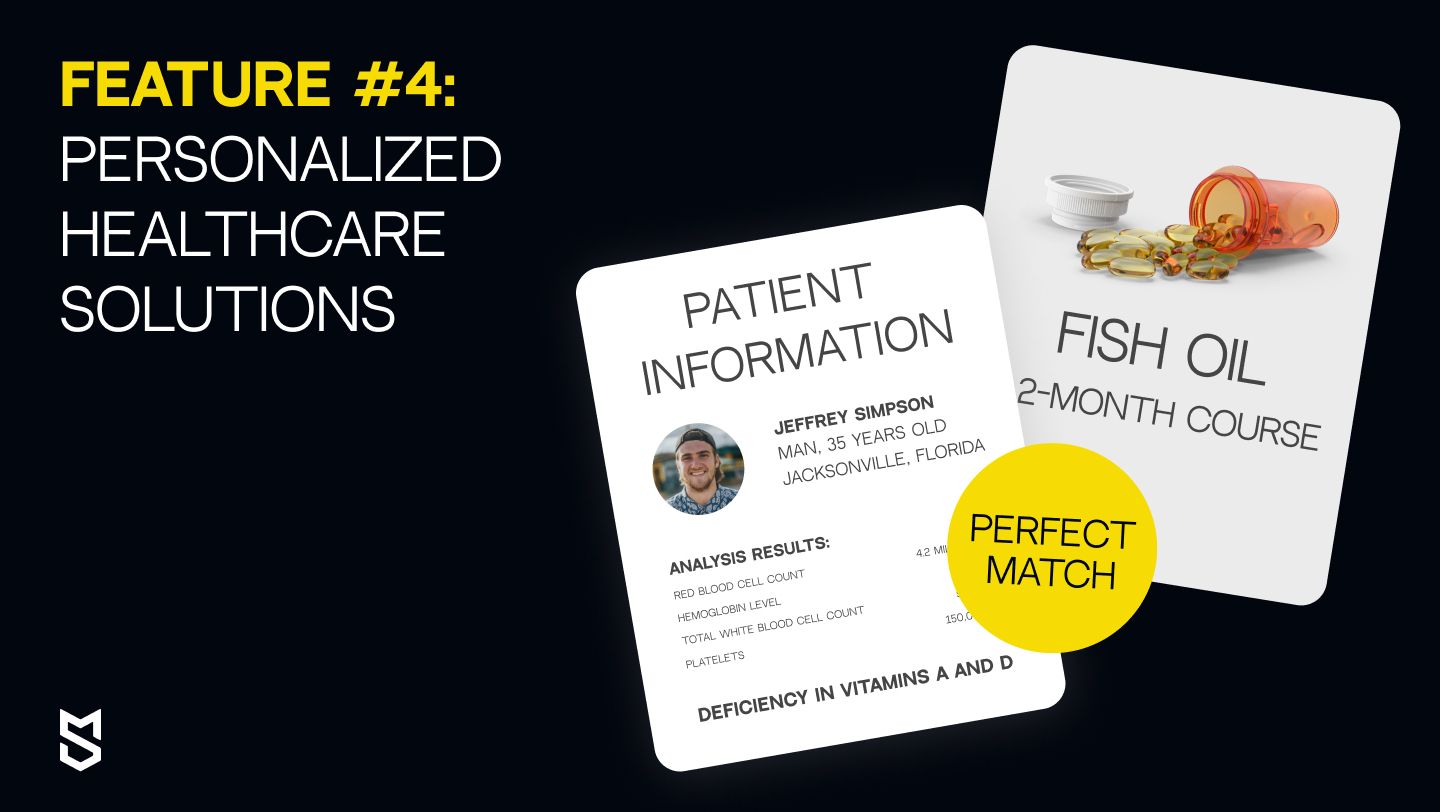
According to many researchers, a personalized approach to healthcare brings better outcomes and allows for more effective use of medical resources. It will also play a key role in the future of healthcare.
Another research highlights that 72% of patients today want more personalized care, making the urgency for more sophisticated and personalized healthcare solutions more pronounced than ever.
Simply put, personalized healthcare solutions are about creating tailored solutions for treatment plans for individual patients using data and healthcare technology. For example, artificial intelligence is used in genomics for DNA analysis. It helps identify and treat diseases, as well as create personalized medicines down to the molecular level.
Feature #5: Integration with wearable devices
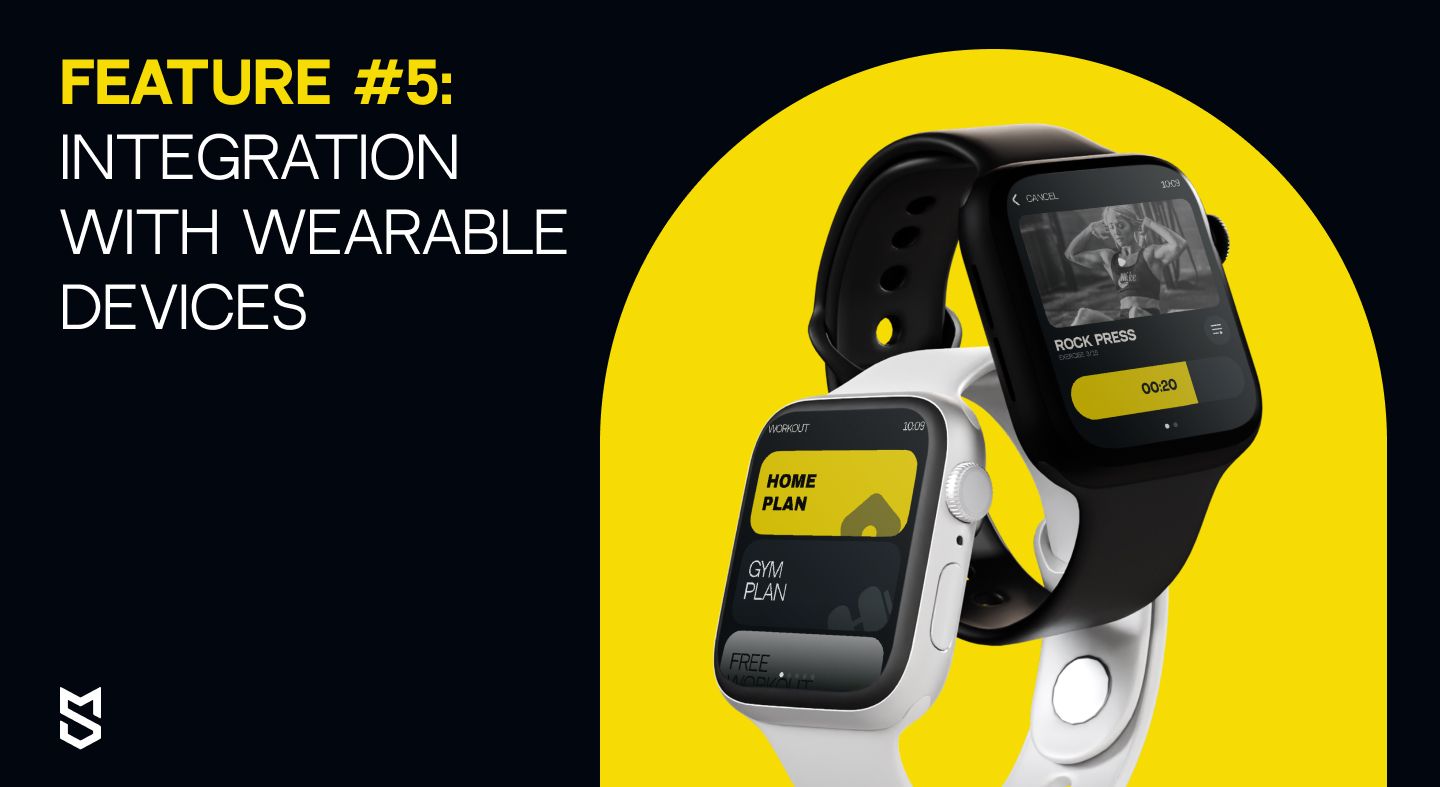
The global market of all wearable devices is expected to reach $69.2 billion by 2028 at a CAGR of 11.2% between 2023 and 2028. This offers a direction for possible improvements to healthcare solution providers who still haven't integrated their apps with wearable devices.
When speaking about technology and healthcare, wearables have momentum here, too. As the breakthrough innovations of the 21st century, today, wearable devices are more popular than ever. That's why having such healthcare mobile app features is simply a must. Today, you can find devices for various medical purposes, from ECG monitors, fitness trackers, and activewear to devices that help monitor diabetes.
For many, Fitbit and Apple smartwatches have become an integral part of their lives, collecting patients' vital information such as blood sugar levels, heart rate, blood pressure, and whatnot. Such data can then be leveraged by healthcare experts to gain a better understanding of the overall patient's health condition, leading to better treatment plans.
Feature #6: AI-driven diagnostic assistance
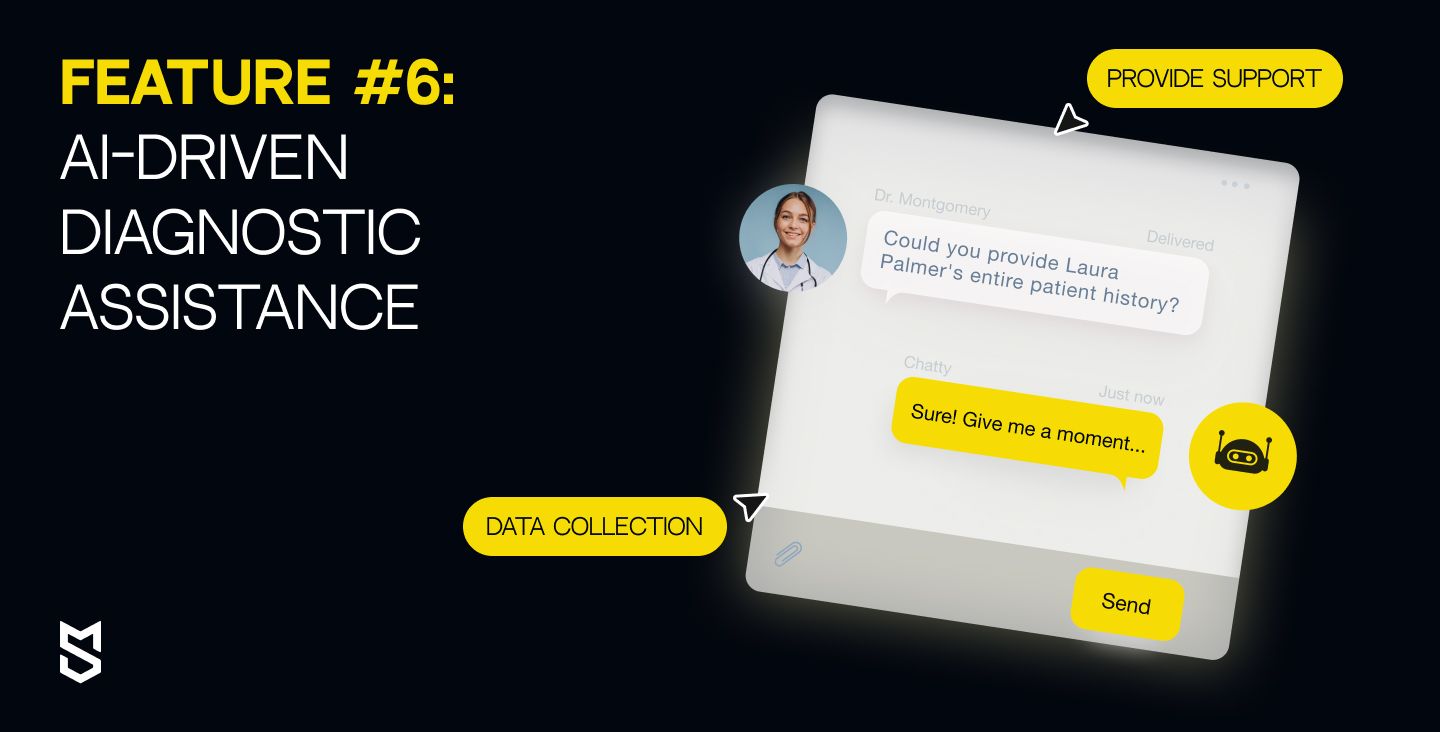
As stated in the report by Harvard's School of Public Health, even in its infancy stage, using AI for diagnosing can reduce the cost of treatment by up to 50% while also improving health outcomes by 40%.
It sounds like one of the promising healthcare app features to add to your healthcare app, right?
Now, AI is fully reshaping and enhancing diagnostic tools as it allows us to analyze a vast amount of data easily and provide more accurate integration of numerous medical data such as images, medical records, patient biometrics, clinical notes, and much more.
Furthermore, as one of the healthcare innovations, AI can fight many healthcare challenges. Thus making diagnoses much faster, cheaper, and more accurate. When coupled with telehealth, it allows patients worldwide to get access to better healthcare and diagnosis.
Feature #7: Real-time health monitoring and alerts
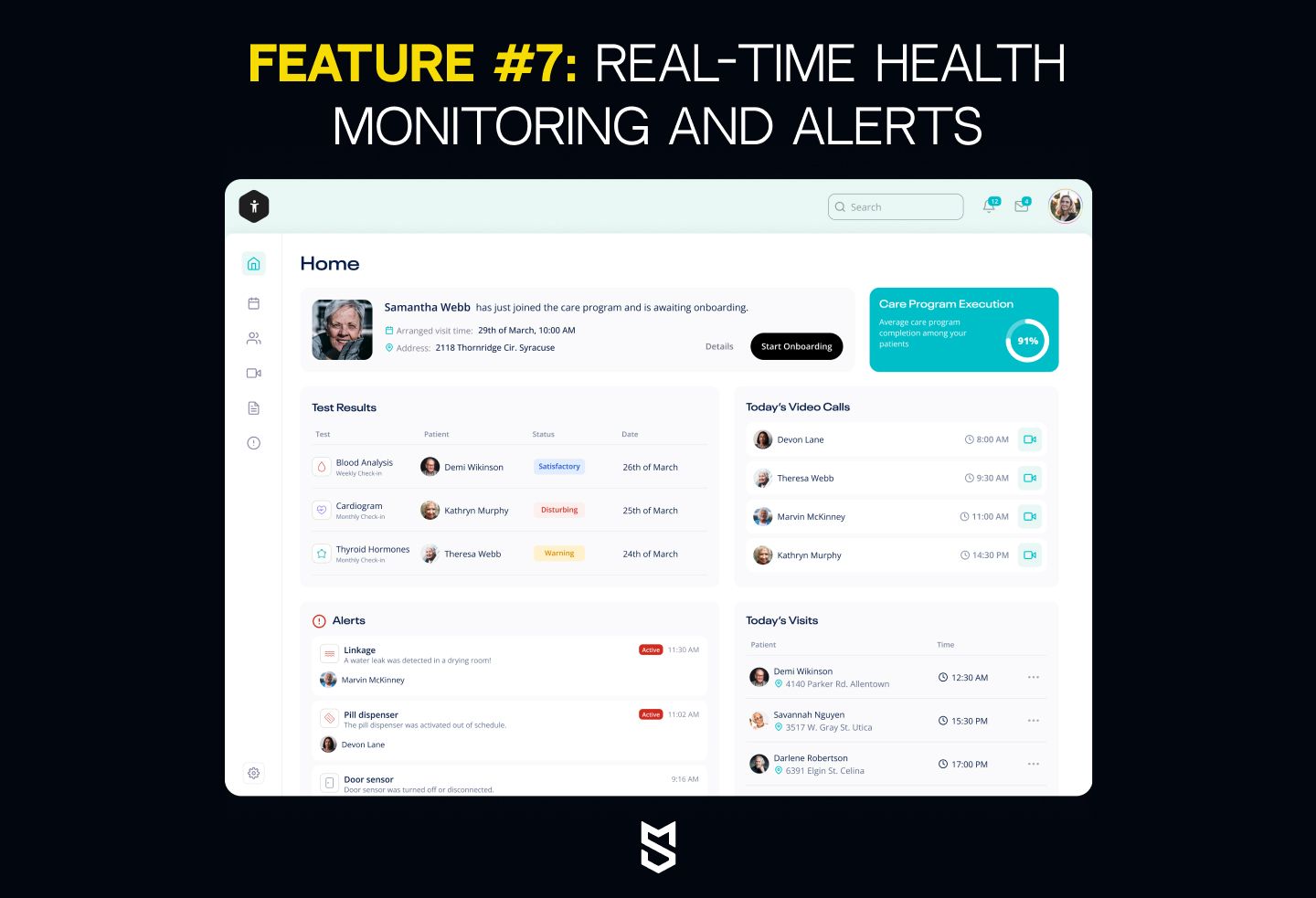
Real-time health monitoring and alerts are yet another helpful feature on our healthcare mobile app features list. This feature allows doctors to remotely monitor multiple patients simultaneously and keep an eye on them virtually, both at the hospital and at home.
Apps can easily send vital patient information such as ECG, respiratory and heart rates, body temperature, blood pressure, saturation, and many more while removing all the geographical obstacles to expert treatment.
At Mind Studios, we recently created an app that helps caretakers provide better services to people with special needs. It is a comprehensive system packed with features like welfare video chat, medicine reminders, and tailored care plans, all under an extremely user-friendly interface. You can contact us to help with your projects as well.
Japan, as society 5.0 (also known as Super Smart Society), has stridden even further and implemented robots as a part of its care program for elderly citizens. They use AI-powered sensors, wearables, and cameras in many retirement homes that send the data directly to the nursing station's management system. This automation makes the work of doctors and nurses much more effective and easier.
Feature #8: Gamification
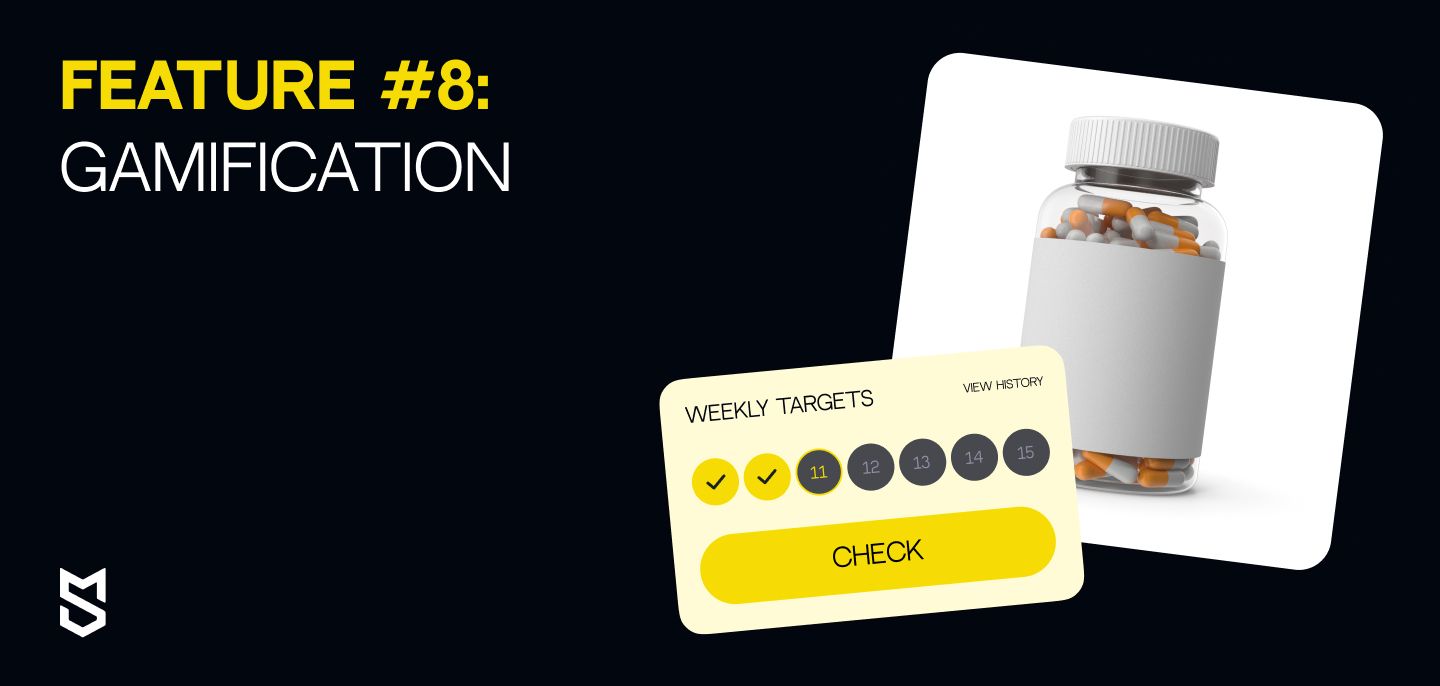
Gamification is one of the must-have healthcare app features, as it can transform a mundane healthcare application into an engaging and interactive experience for users. Undoubtedly, in 2024, more and more companies will start incorporating game strategies into non-gaming contexts to foster the motivation and engagement of users. This tactic will encourage users to participate in various health challenges, log their daily activities, and, more importantly, consistently interact with your app to get better health outcomes.
Gamification is very effective in managing various chronic conditions like diabetes or hypertension. By adding such features as daily challenges, rewards, or progress tracking to meet users' health goals (such as maintaining blood sugar levels or healthy blood pressure), you can motivate users to adhere to their treatment plans and make their disease management less challenging.
If used in mental health care, gamification can help users manage stress or practice mindfulness with the help of interactive activities. This can include daily mindfulness challenges, mood tracking with some rewards, or some cognitive games.
Feature #9: Patient engagement and education
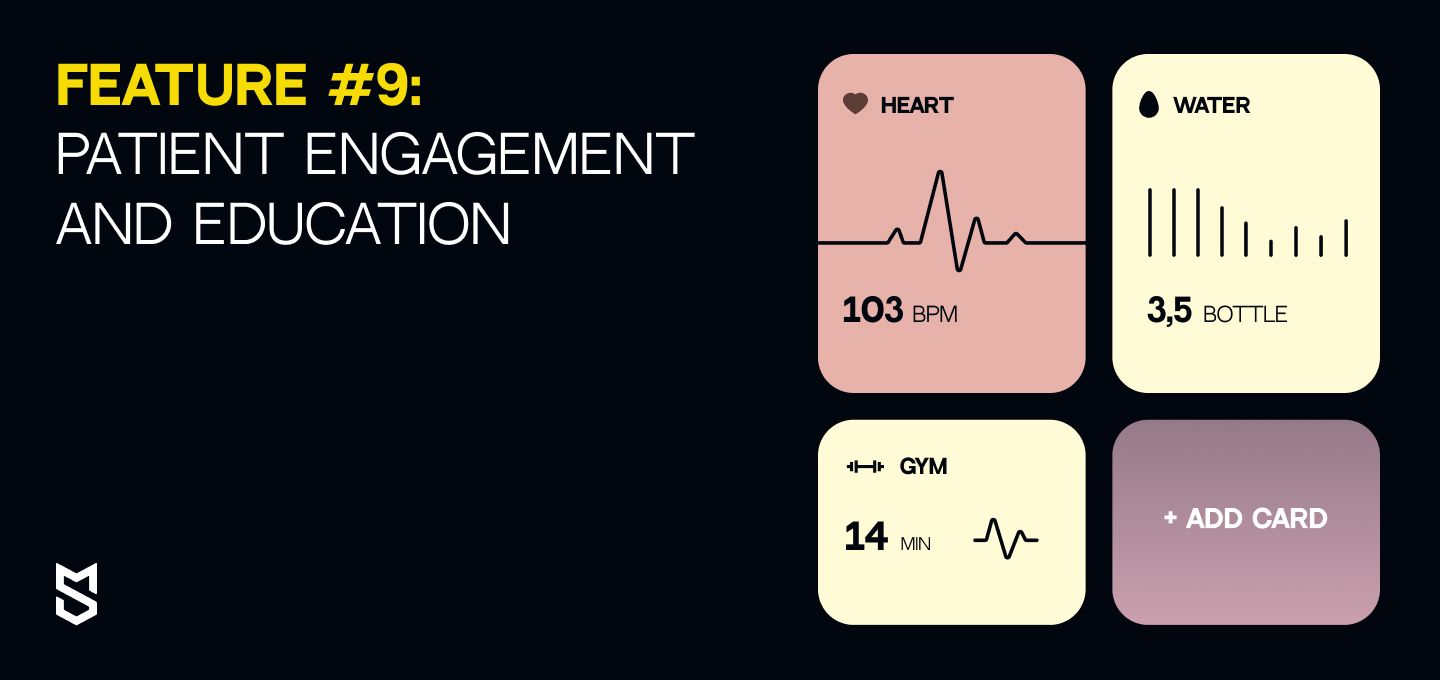
Focus on engagement and education is what sets many successful healthcare apps apart. If you want to attract more users, you need to think of implementing such features as AI-powered chatbots, tailored educational resources, or personalized health trackers. They will empower patients by offering them critical health information and promote continuous engagement through more interactive and personalized experiences.
Feature #10: Interoperability with EHR
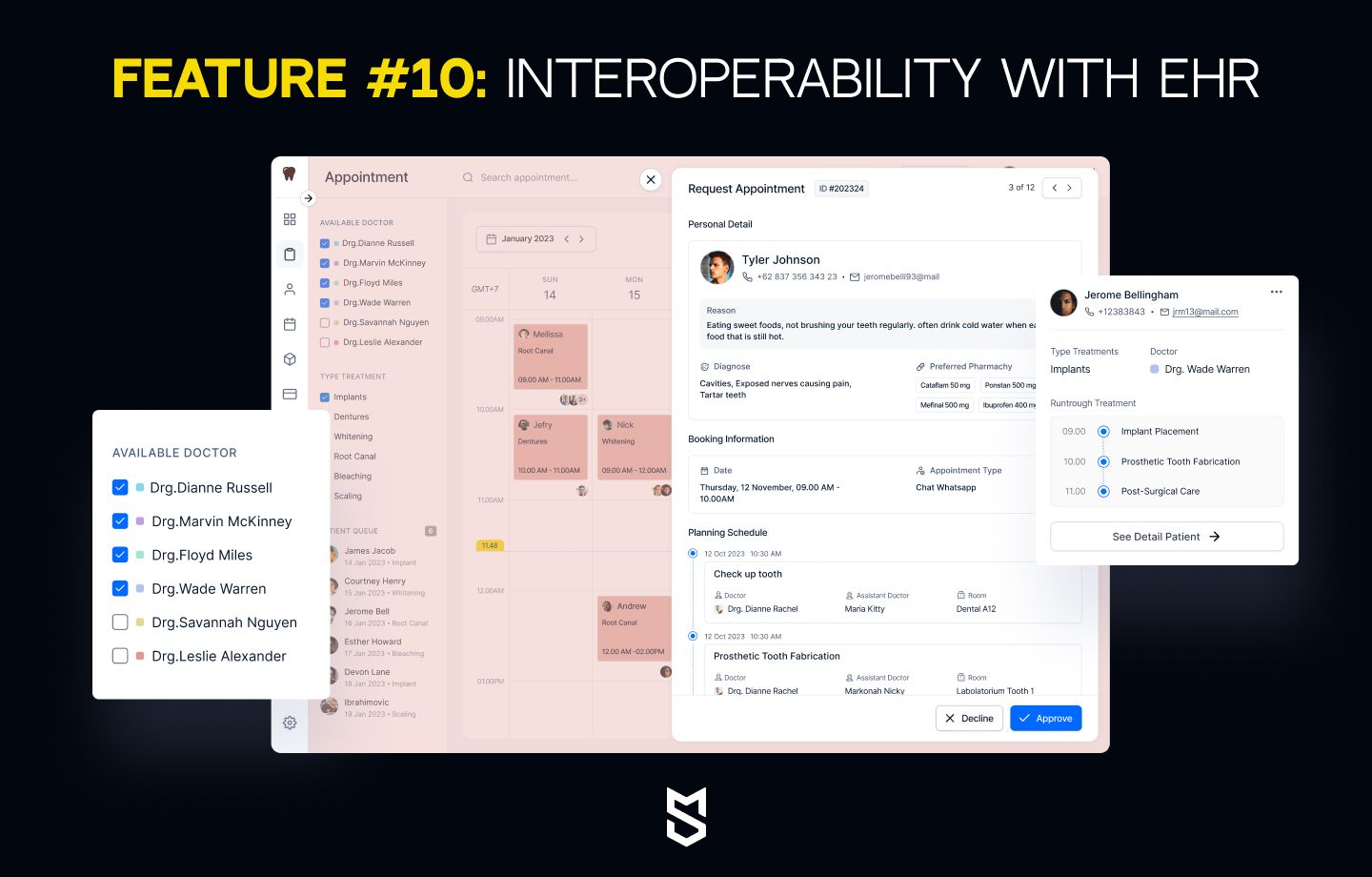
Like in any other industry, it is crucial for healthcare to have one unified database. That's why the introduction of the Electronic Health Record (EHR) made it much easier for healthcare workers to manage and track health data, as well as make better data-driven decisions. In fact, eight out of ten doctors within the US, or 83%, have already adopted and been using EHRs, making integrating your healthcare app with EHR not an advantage but a necessity.
Mind Studios is here to help you implement any feature you need to make your healthcare app useful, up-to-date, and competitive. Contact us for professional help.
Emerging technologies in healthcare apps
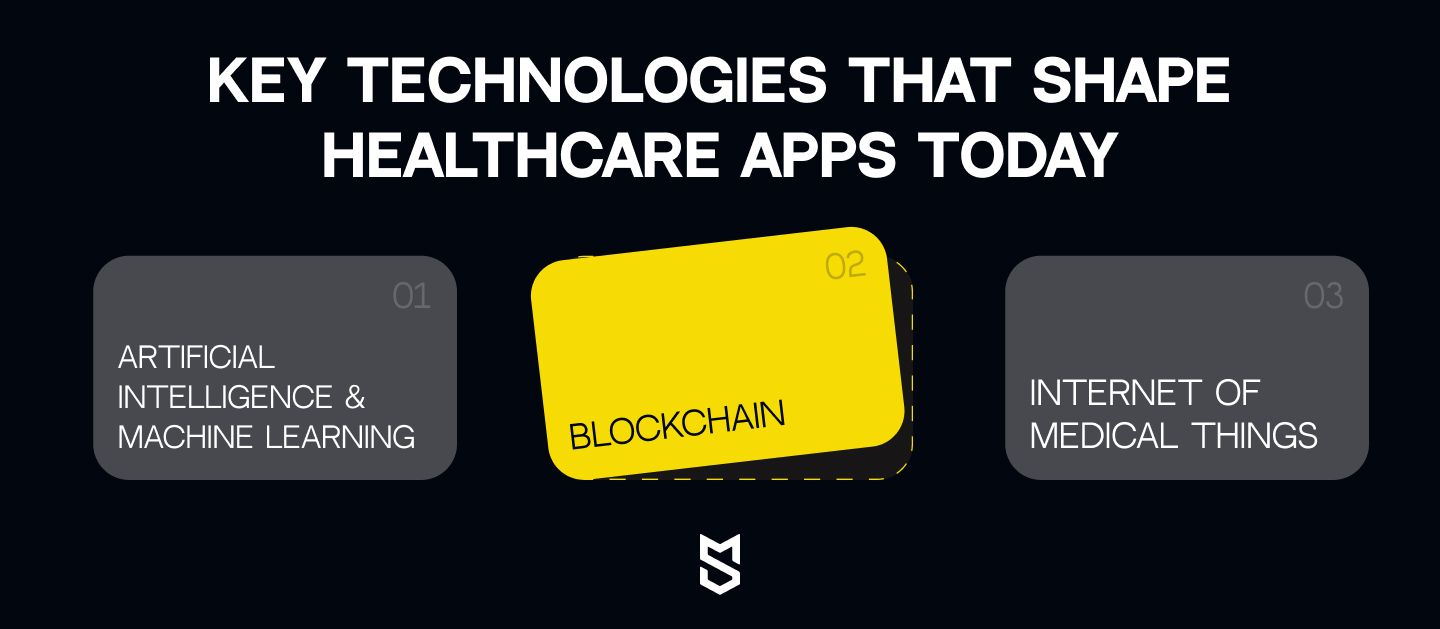
Now, let’s move on to the technologies that are fueling today's trending healthcare mobile app features.
AI, ML, Blockchain, and IoMT are the key factors that will transform the healthcare industry in 2024, particularly in app development. They are not just reshaping how care is delivered; they are changing the whole healthcare experience by bringing a wealth of helpful features for diagnosis, patient engagement, and treatment.
Key technologies and their tasks in healthcare
AI & ML |
Disease detection Patient monitoring Predictive analytics Image interpretation |
Blockchain |
Secure data sharing Supply chain transparency Patient data management |
IoMT |
Disease detection Remote monitoring Treatment personalization |
Artificial intelligence
The whole healthcare tech sector is moving towards becoming more intelligent, and artificial intelligence is the driving force behind it. It is going to rock healthcare in the near future by revolutionizing many aspects, from patient care automation to diagnostic imaging, enhancing operations and clinical outcomes.
But how does it work in healthcare?
AI uses complex algorithms and software designed to analyze, interpret, and comprehend complex medical data. It also helps achieve more precise and efficient care as it transforms silos of data into helpful insights. For example, AI is helpful in the analysis of medical images in oncology as it helps to detect any abnormalities, such as tumors, faster and much more accurately than any other traditional methods. Similarly, NLP chatbots are used to deliver instant responses to any patient inquiries, which significantly streamlines communication and improves patient engagement.
Such big names as AWS, SalesForce, IBM, and Microsoft, as well as others, have been working on AI/ML healthcare solutions and ways to contribute to healthcare interoperability, in particular with AI and cloud computing. Furthermore, IBM Consulting will train 10,000 consultants on using generative AI by the end of 2024 to help clients across various industries expand their generative AI capabilities.
AI can be considered one of the most dominant digital trends as many healthcare solutions, wearables, drug tracking systems, and other systems are powered by it. It can be used to enhance any processes of both backend and patient care, starting from freeing up employees from mundane tasks, round-the-clock virtual assistance for patients, fraud prevention (which costs $380 billion per year for the US healthcare industry alone!), less invasive surgeries using AI-enabled robots, and others.
For patients, AI-powered apps can be utilized to create urgent medical treatment plans if no medical expert is available. Such apps can also study a patient's mood and symptoms if they are paired with wearables. After analyzing this data, they can provide doctors with helpful insights on what treatment plant to adopt or medications to choose.
Machine learning
Machine learning, a subset of AI, has many potential applications in healthcare as well. However, one of its key roles is extracting meaning from a patient's medical records. ML algorithms are very valuable because they help medical professionals extract the needed information and make sense of the massive silos of healthcare data that are generated daily.
They can also help find patterns and insights in data that are simply impossible to find manually. As ML gets more widespread, healthcare providers will be able to take a more predictive approach toward precision medicine as well as create a unified system for better care delivery, patient outcomes, and all patient-oriented processes.
Blockchain
Blockchain is projected to surge $4.46 billion in 2026 at an annual rate of 38.1% during 2022–2026. For many, the technology is mostly associated with patient data encryption. However, its application in healthcare goes beyond that to creating a fully transparent, decentralized, and tamper-proof system for safeguarding medical records. It also boosts patient privacy and enhances connectivity within the whole healthcare ecosystem.
Plus, it can easily connect fragmented systems. This fosters the generation of valuable insights and a more accurate evaluation of the overall care value. Over time, blockchain promises to significantly enhance the electronic medical records system nationwide. This will lead to enhancing operational efficiency and quality of patient care outcomes.
According to the National Institutes of Health (NIH), the inability to safeguard patient's data is the top reason why an mHealth app fails to get user retention. Blockchain technology, in turn, fully fortifies healthcare solutions by providing transparent, incorruptible, and decentralized logs of numerous medical records.
Internet of medical things
The Internet of Medical Things (shortly IoMT) is a network consisting of numerous connected medical devices alongside various apps, health systems, and services. It is forecasted to reach $254.2 billion in 2026, fueled by increased demand for wearable technology, advancements in wireless connectivity, and the need for more personalized and efficient healthcare solutions.
Speaking about the use of IoMT in healthcare, here, the list includes patient monitoring, preventive care, and chronic disease management. For instance, wearable devices can continuously track a patient's vital signs, allowing immediate adjustments to their treatment plans. They can also alert healthcare providers when a patient's condition changes, enabling timely intervention.
IoMT brings numerous benefits to the table. For starters, it significantly enhances the quality of care by providing medical experts with detailed and accurate data. Moreover, it also improves patient involvement and encourages users to manage their health proactively. Lastly, it streamlines operational efficiency as patients do not need to visit hospitals, which reduces healthcare costs and the burden on healthcare systems.
Looking for ways to upgrade your healthcare app with modern technologies? We have all the experts and knowledge needed to turn your app into a leading solution on the market. Just contact us.
Examples of feature-rich healthcare apps
AI, ML, and blockchain are setting a new standard for patient care and management. Let’s take a look at some of the popular mHealth apps powered by these technologies that are redefining healthcare today.
Woebot
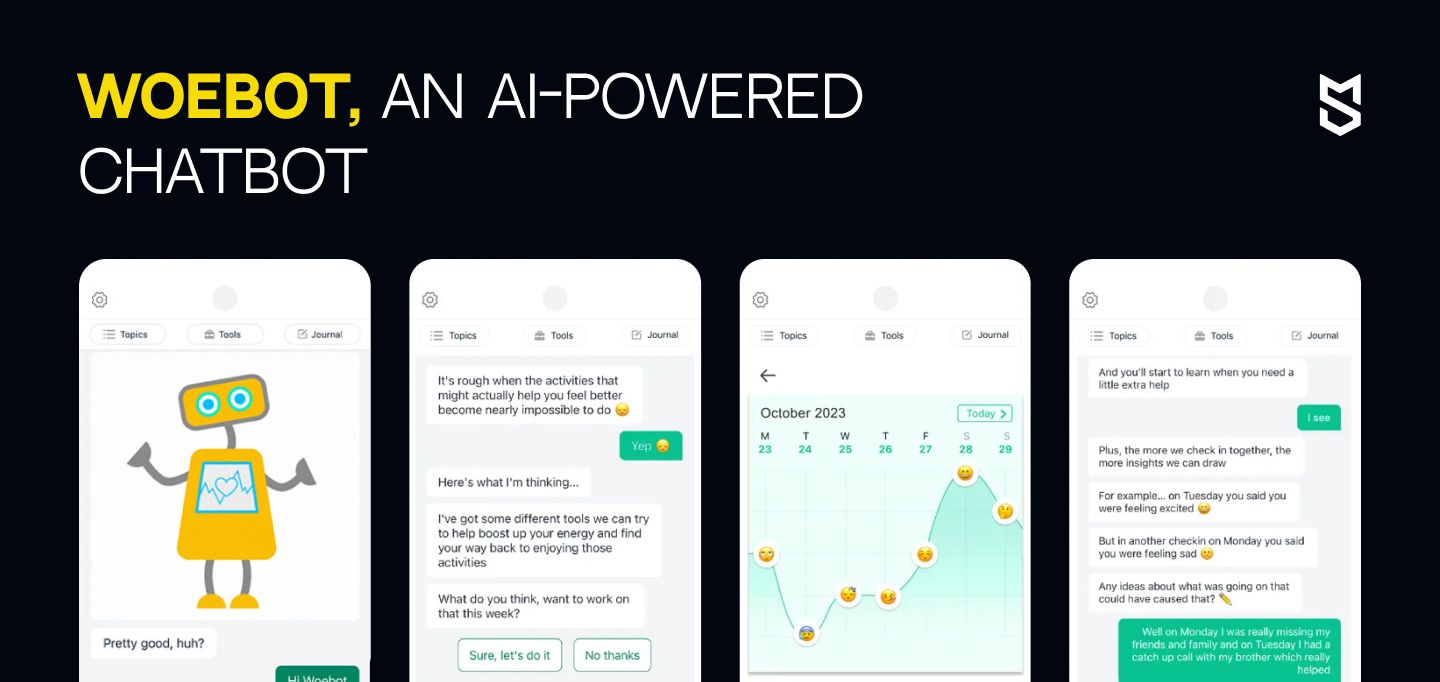
Created by clinical research psychologist Dr. Alison Darcy, Woebot is an AI-powered chatbot that employs the core principles of Cognitive Behavioral Therapy (CBT), Interpersonal Psychotherapy (IPT), and Dialectical Behavioral Therapy (DBT). Its main aim is to help users better manage distressing thoughts and feelings via meaningful online conversation and support.
After quick registration, the system asks to share users' moods and feelings and suggests tools and strategies to help. Besides chatting, users can access a mood chart showing their mood entries over time and various psychoeducational materials.
As stated by the company, Woebot can build a connection with a user just within 3–5 days. Combining AI and NLP made this possible, helping form trusted relationships and bonds faster and better. It also helps deliver various techniques and strategies in a conversational and approachable manner. Besides, Woebot is trained to detect any concerning language and offer further help by suggesting information from external resources.
Ada Health
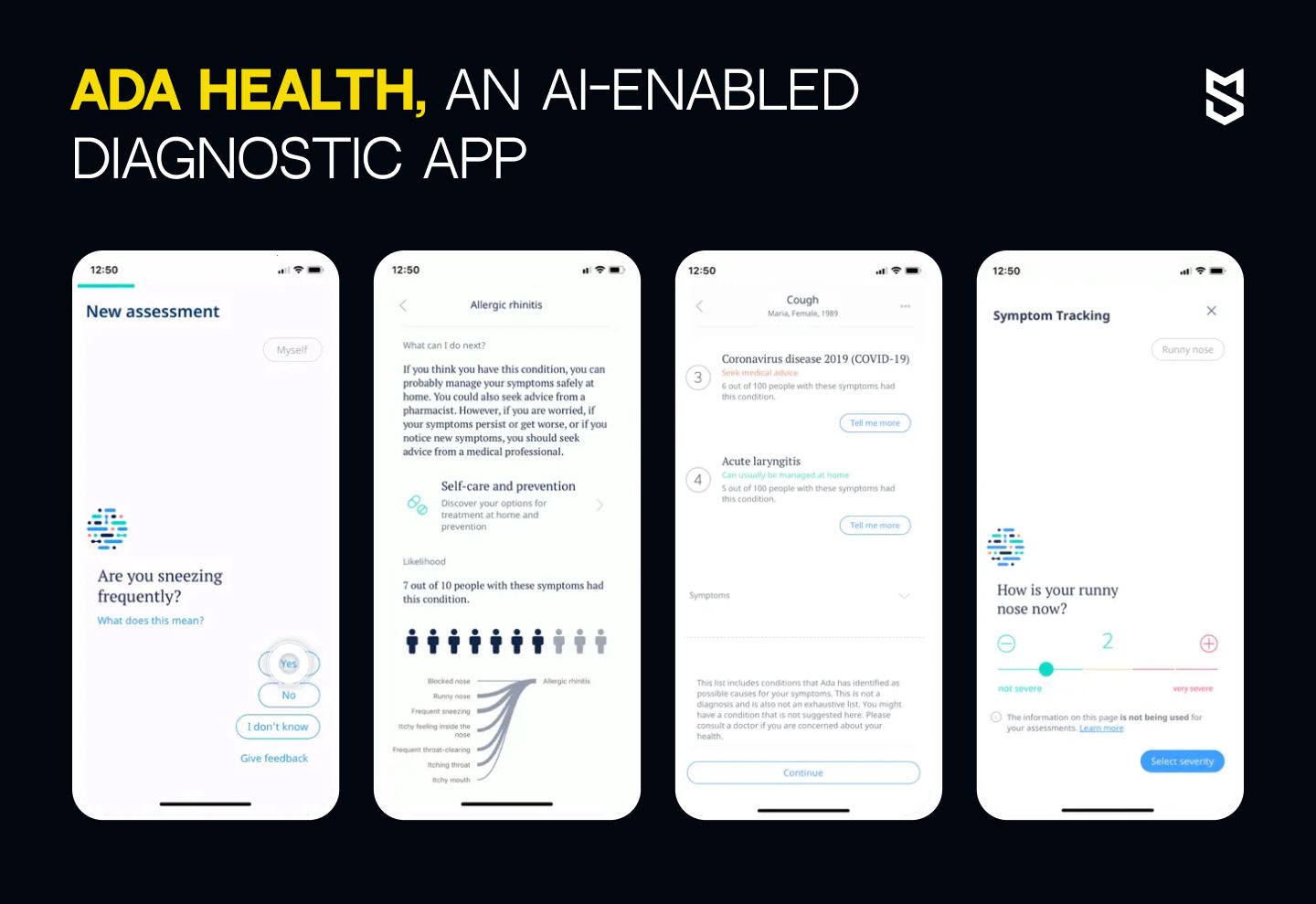
Created by Dr. Claire Novorol in 2016, the Ada Health app is now claiming to cover 99.5% of all medically diagnosable conditions. In fact, it can scan through more than 10,000 symptoms and risk factors and links to over 31,000 different ICD-10 codes (a system that codes diagnoses for health procedures for insurance claims). What's more, Ada Health has 13 million (!) active users globally.
What's so unique about this app?
It is packed with smart features and works on a probabilistic reasoning system that employs Bayesian methods (a key concept for AI and computer science). What sets Ada Health apart is that aside from identifying the most common symptoms (like cough, nausea, headache, etc.), it can differentiate between common and less common causes to identify even the rarest conditions successfully.
Its creator, Dr. Novorol, says that Ada is a so-called 'white box system', which means that for any given suggestion, there is full transparency on how exactly the system came to a conclusion.
Besides, the app is evolving with new types of AI testing on a regular basis. Currently, they are testing large language models (LLMs) and ways to overcome their limitations (namely non-transparency and opaqueness) and employ them in clinical settings.
Medicalchain
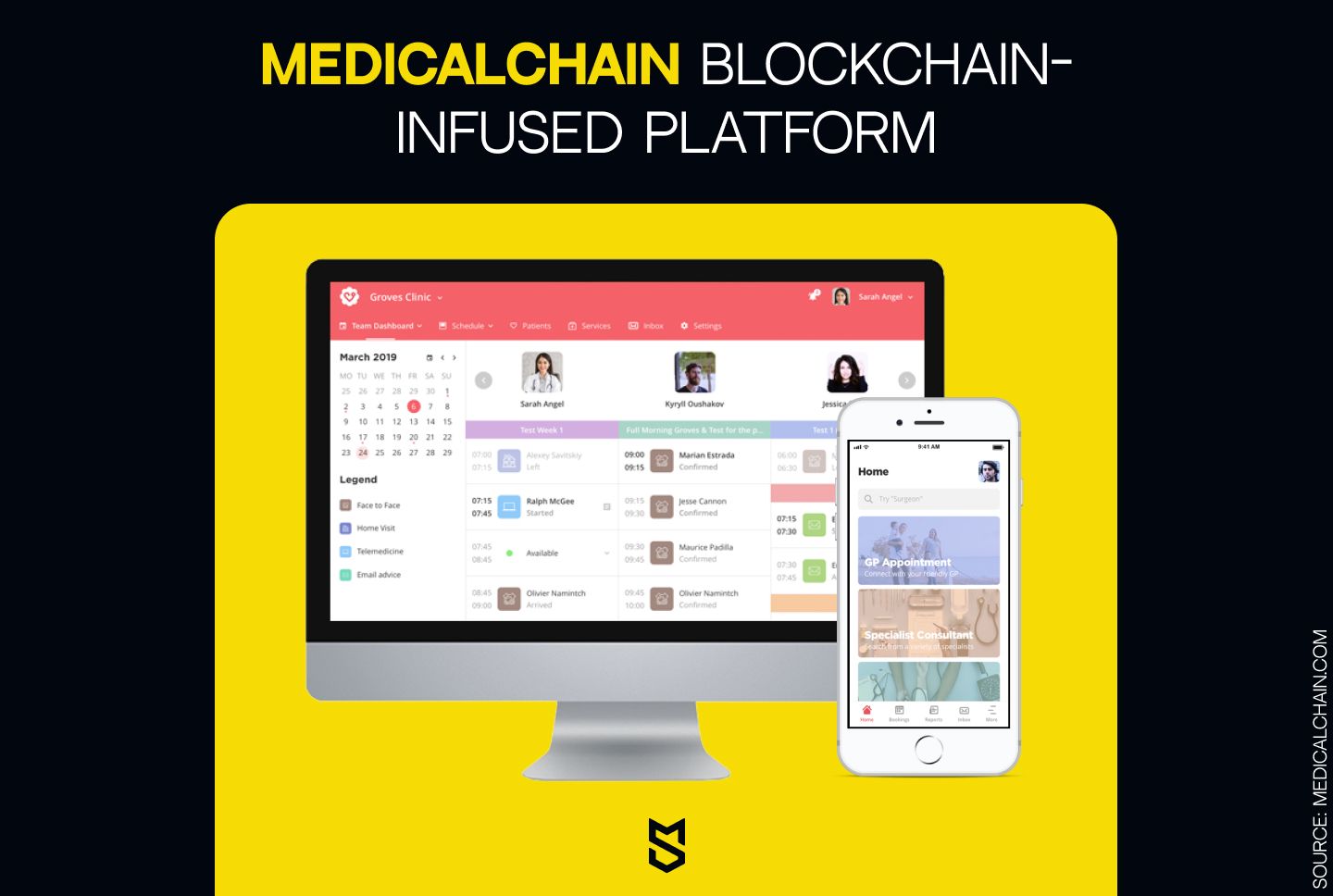
The Medicalchain technology provides real-time retrieval of medical records. Simply put, it allows patients to communicate directly with doctors and share their medical records for online consultation. Besides, doctors can make notes directly into the patient's medical record.
Currently, Medicalchain is working on a doctor-to-patient application and a health data marketplace. One of the apps that use this technology is MyClinic.
How does Medicalchain work?
Medicalchain is both a platform and a technology that uses a dual blockchain structure. The first blockchain is built with Hyperledger Fabric, and it manages access to medical records; the ERC20 token on Ethereum powers the second and works with all apps and services within the platform. The permission is controlled through Hyperledger modeling and access control languages. Hyperledger Fabric allows for flexibility, resilience, and confidentiality of sensitive data and the app's privacy. Besides, it has multiple layers of permission so that the owner of the data has control over which part of the data is accessed.
Ethereum's blockchain can make all transactions both transparent and secure. Any activity within the Ethereum blockchain is conducted securely and fully transparently via Smart Contracts. The company states that an average medical worker spends 3.8 hours a week solely on billing or insurance activities. Smart Contracts will significantly reduce the cost and time spent on such activities.
Our tech team can help transform your app into a feature-rich solution in no time. Contact us for details.
Common challenges in implementing advanced features
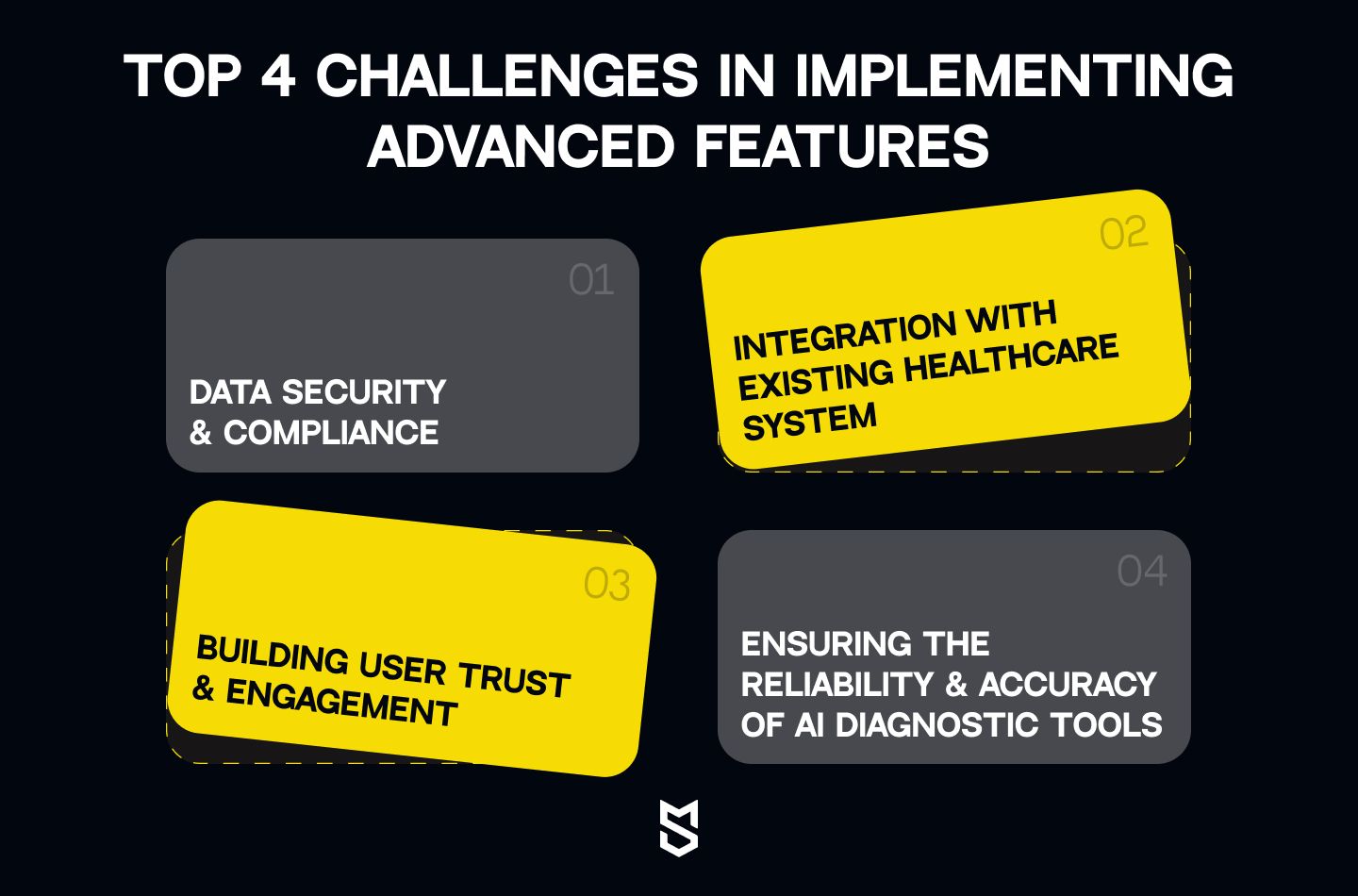
With advanced healthcare app features comes a share of challenges that tech teams need to overcome. Here, we have collected the most common ones:
Challenge #1 Data security and compliance
Problem: Healthcare apps store sensitive patient data. That is why you must ensure compliance with industry regulations (HIPAA in the US and GDPR in the EU) as well as secure data storage and transmission.
Solution: If you still haven’t secured your healthcare encryption for data in rest and transit, that should be the first step prior to adding new features. Consider also opting for reliable authentication mechanisms, as well as not neglecting conducting regular security audits. To help with compliance, you can use various frameworks and services.
Challenge #2 Integration with existing healthcare systems
Problem: Integrating advanced AI and ML features with your existing healthcare IT ecosystem without disrupting your current processes is indeed a significant challenge. It stems from the complexity as well as variability of healthcare systems. Plus, the legacy software might not support new technologies. As a result, such compatibility issues can lead to significant operational disruptions.
Solution: To help you easily integrate new features into your existing system, you need to opt for a microservice architecture. Such architecture allows you to add new features as independent services that interact with already existing ones with the help of APIs. Investing in such a system enables much easier integration, scalability, and updates without affecting your core functionality.
Challenge #3 User engagement and trust
Problem: If you add blockchain for more transparent and secure patient consent and personal health management, you may find yourself in a position where you need to build trust among both patients and healthcare workers in new technologies.
Solution: In this case, you need to employ user-friendly interfaces and fully transparent processes to show clearly how such data is managed, secured, and used. You also need to conduct training and provide educational materials to patients and healthcare providers that define the benefits of working with blockchain technology.
Challenge #4 Ensuring accuracy and reliability of AI-powered diagnostic
Problem: This is a key challenge for many healthcare providers. The actual problem lies in the need for AI algorithms to deliver precise diagnoses and minimize the risks of misdiagnosis, which can lead to incorrect treatment plans that endanger patients' health.
Solution: To avoid or overcome such a problem, you need to employ a robust validation and AI training process. It should include using high-quality and fully anonymized patient datasets to train your AI models. You should also add learning algorithms to continuously improve their knowledge base with new medical research and patient data. As a final step, you can also create a system of checks where all AI-generated diagnoses have to be finally reviewed and approved by healthcare professionals.
Struggling with extending your app’s functionality? We are here to transform any challenge into a competitive advantage.
Wrapping up
Staying ahead in the always-evolving healthcare app market is a challenging task. It requires integrating the latest technologies and features to meet the users' needs for accessible, convenient, and personalized care. The top 10 healthcare mobile app features and technology trends we explored in our article can drastically boost your app’s chances of success in 2024.
If you need help figuring out where to start, our tech team at Mind Studios is always ready to help you create or enhance your mHealth app with cutting-edge features that bring real value. Our expertise in creating secure, intuitive, and impactful healthcare solutions will transform your healthcare app into a vital tool for many professionals and users alike.
Are you ready to innovate and meet the future of healthcare with Mind Studios? Reach out to us to get a free consultation with our business development team.

